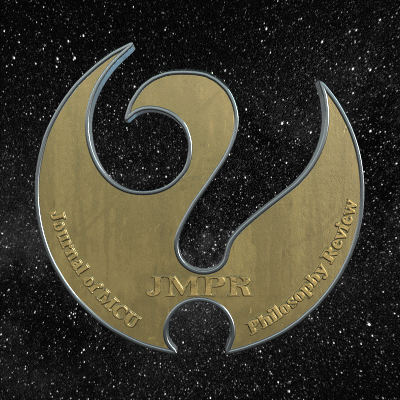Educational Technology Administration that Affects Learners Quality in Educational Institutions under Chonburi Primary Educational Service Area Office 3
Main Article Content
Abstract
The objectives of this research article are to study: 1) the educational technology administration in educational institutions 2) the learners’ quality in educational institutions and, 3) the educational technology administration that affects the learner’s quality in educational institutions under Chonburi Primary Educational Service Area Office 3. This is descriptive research. The educational institutions were used as the unit of analysis.
The population used were 70 institutions under Chonburi Primary Educational Service Area Office 3. Three people for each educational institution provided data in this research are institutions administrators and teachers, total data providers of 210 people. The instrument used is a questionnaire. The evaluation results have a reliability value of 0.93. The statistics used for data analysis were frequency, percentage, arithmetic mean, standard deviation, stepwise multiple regression analysis. The results of the study were as follows: 1) Educational technology administration in educational institutions under Chonburi Primary Educational Service Area Office 3 overall was at the highest level. When considering each aspect, it was found that all aspects were at the highest level with a mean value of 4.60 and a standard deviation value of 0.41. The average values from highest to lowest are as follows: teaching and learning, learning process, internal educational management, infrastructure, public private and community co - operation, and learning resources respectively. 2) earners quality in educational institutions under Chonburi Primary Educational Service Area Office 3, were generally at a high level with a mean value of 4.45 and a standard deviation value of 0.49. When considering side by side at a high level at all aspect in descending order as follows: the desired characteristics of learners and academic achievement of students respectively. 3) Educational technology administration that affects the learner’s quality in educational institutions under Chonburi Primary Educational Service Area Office 3. In terms of learning resources and management within the educational institution affects the learner’s quality in educational institutions with statistical significance at the .01 level. The infrastructure affects the learner’s quality in educational institutions with statistical significance at the .05 level.
Article Details

This work is licensed under a Creative Commons Attribution-NonCommercial-NoDerivatives 4.0 International License.
บทความที่ได้รับการตีพิมพ์เป็นลิขสิทธิ์ของวารสาร มจร ปรัชญาปริทรรศน์
ข้อความในบทความที่ได้รับการตีพิมพ์ในวารสาร ถือเป็นความรับผิดชอบของผู้เขียนบทความ และข้อคิดเห็นนั้นไม่ถือว่าเป็นทัศนะและความรับผิดชอบของกองบรรณาธิการวารสาร มจร ปรัชญาปริทรรศน์
References
กระทรวงศึกษาธิการ. สำนักงานเลขาธิการสภาการศึกษา. (2560). แผนการศึกษาแห่งชาติ พ.ศ. 2560 - 2579. พิมพ์ครั้งที่ 2. กรุงเทพฯ : สำนักงานเลขาธิการสภาการศึกษา.
กลุ่มนิเทศติดตามและประเมินผลการจัดการศึกษาสังกัดสำนักงานเขตพื้นที่การศึกษาประถมศึกษาชลบุรีเขต 3. (2563). แผนนิเทศการศึกษาประจำปีงบประมาณ 2563. เอกสารนิเทศลำดับที่ 2 – 2 / 2563. สำนักงานคณะกรรมการการศึกษาขั้นพื้นฐาน.
เกษณี จารุสาร. (2553). การใช้เทคโนโลยีสารสนเทศและการสื่อสารเพื่อการบริหารงานวิชาการของโรงเรียนแม่อ้อวิทยา อำเภอพาน จังหวัดเชียงราย. วิทยานิพนธ์ครุศาสตรมหาบัณฑิต สาขาการบริหารการศึกษา. มหาวิทยาลัยราชภัฏเชียงราย.
ณัฐกรณ์ หิรัญชาติ. (2558). บทบาทผู้บริหารกับการใช้เทคโนโลยีสารสนเทศและการสื่อสารในสถานศึกษาที่มีประสิทธิผล. วิทยานิพนธ์ศึกษาศาสตรมหาบัณฑิต สาขาวิชาการบริหารการศึกษา. มหาวิทยาลัยศิลปากร.
ธานินทร์ อินทรวิเศษ และคณะ. (2564). ภาพสะท้อนการศึกษาไทยหลังภาวะโควิด 2019. วารสารการบริหารนิติบุคคลและนวัตกรรมท้องถิ่น, 7(4): หน้า 323 – 332.
ปิยนุช บัวชุม. (2561). การใช้เทคโนโลยีสารสนเทศเพื่อการบริหารของสถานศึกษา สังกัดสำนักงานเขตพื้นที่การศึกษาประถมศึกษานครศรีธรรมราช เขต 4. การค้นคว้าอิสระครุศาสตรมหาบัณฑิต สาขาวิชาการบริหารการศึกษา. บัณฑิตวิทยาลัย มหาวิทยาลัยราชภัฏสุราษฎรธานี.
บุญชม ศรีสะอาด. (2560). การวิจัยเบื้องต้น. พิมพ์ครั้งที่ 10. กรุงเทพฯ : สุวีริยาสาส์น.
บุญตา ชาญชำนิ. (2552). ความสัมพันธ์ระหว่างการบริหารโดยใช้โรงเรียนเป็นฐานกับประสิทธิผลของโรงเรียน สังกัดสำนักงานเขตพื้นที่การศึกษาขอนแก่น เขต 3. วิทยานิพนธ์ ครุศาสตรมหาบัณฑิต. สาขาวิชาการบริหารการศึกษา คณะครุศาสตร์ มหาวิทยาลัยราชภัฏเลย.
รินทร์ณฐา บวรวัชรเศรษฐ์ และ วรางคณา โสมะนันทน์. (2564). การศึกษาการจัดการเรียนการสอนช่วงสถานการณ์ COVID-19 สำหรับนักเรียนที่มีผลสัมฤทธิ์ทางการเรียนต่ำ. วิทยานิพนธ์ การศึกษามหาบัณฑิต สาขาวิชาการศึกษาพิเศษ คณะศึกษาศาสตร์ มหาวิทยาลัยเกษตรศาสตร์
วราวิทย์ วาณิชย์เจริญ. (2559). บทบาทผู้บริหารสถานศึกษาในการส่งเสริมการใช้เทคโนโลยีทางการศึกษาของครูในสถานศึกษา สังกัดสำนักงานเขตพื้นที่การศึกษาประถมศึกษาสุราษฎร์ธานี เขต 1. การศึกษาค้นคว้าอิสระครุศาสตรมหาบัณฑิต สาขาวิชาการบริหารการศึกษา. มหาวิทยาลัยราชภัฏสุราษฎร์ธานี.
เสาวรัจ รัตนคำฟู. (2563). วิกฤตโควิด-19 รัฐต้องเร่งลดช่องข้างต้นงดิจิทัล เพื่อความเท่าเทียมในห้องเรียนออนไลน์. สืบค้นเมื่อวันที่ 23 มกราคม 2565. จากแหล่งที่มา: https://tdri.or.th/2020/04/digital-divide online-education-inequalities/.
Best, John W. & James V. Kahn. (1997). Research in Education. 7th ed. Boston: Allyn and Bacon
Cronbach, Lee. J. (1990). Essential of Psychological Testing. (5nd end). New York: Happer Co; Ins.
Chen, C. H., & Tsai, C. C. (2021). In-service teachers’ conceptions of mobile technology-integrated instruction: Tendency towards student-centered learning. Computers & Education. 170, 104224.
Krejcie, R. V., & Morgan, D. W. (1970). Determining sample size for research activities. Educational and Psychological Measurement, 30(3), 607–610
Likert, Rensis. (1961). New Patterns of Management. New York: McGraw-Hill
Zahid Zufar At Thaariq. (2021). How does educational technology answer challenges? Empirical theoretical studies and public perspectives. Journal of Education and Learning, 15(3), 474-482.


